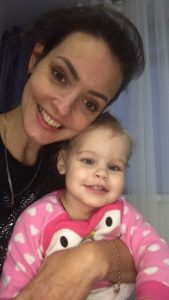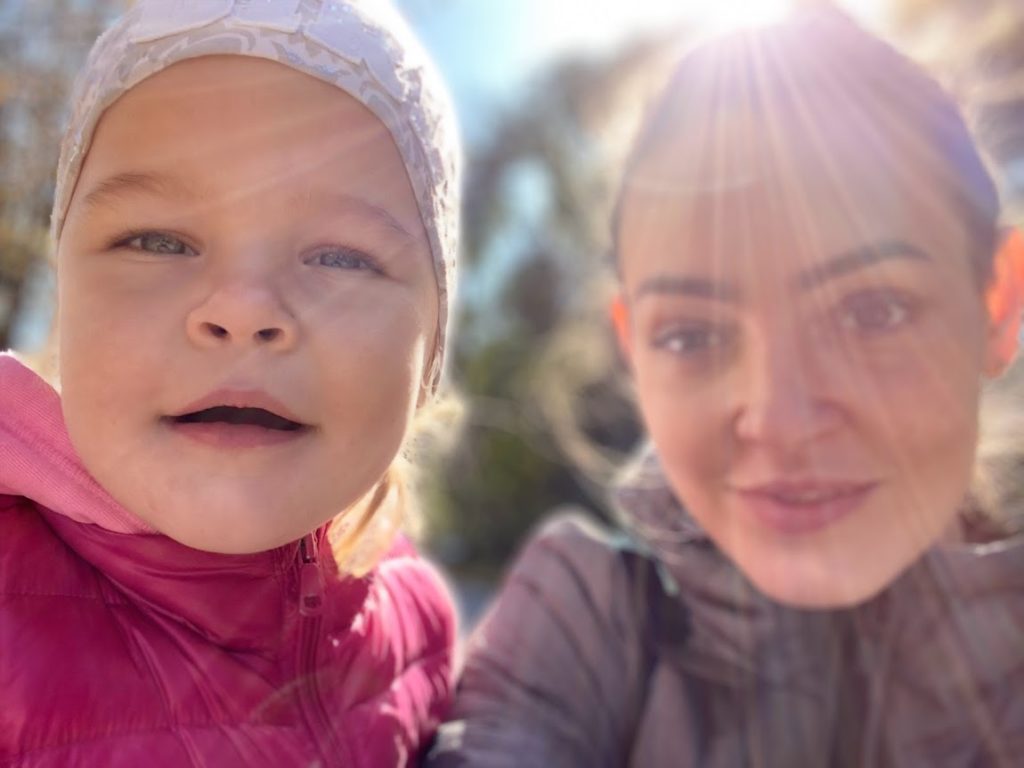Over recent weeks, stories have emerged regarding the frightening situation in Ukraine. People have lost their lives, their homes, and their sources of income. So what happens to those like the Maiier family, who lost their only source of income – income that they need to provide life-saving treatment to their daughter? Varyusha Maiier, also known as Varya, was born with SLC6A1 epileptic encephalopathy, a rare genetic disorder. She is the only known diagnosed case in Ukraine. Currently, the Maiier family are working to raise money to put Varya on the waitlist for an experimental therapy developed by researchers at UT Southwestern. However, given the loss of income and the cost of travel and other expenses, the Maiier family is reaching out for help.
Together, the Maiier family hopes to not only raise awareness of SLC6A1 epileptic encephalopathy, but also to provide a better life for their daughter. To learn more about the Maiier family, Varyusha, and the fundraising efforts, take a look at this Google document put together by Oleksandra Maiier.
Varyusha’s Story
In December 2017, Varyusha Maiier came into the world. She brought, and continues to bring, such immense joy to her family; her mother Oleksandra shares:
“She was and remains perfect in every way.”
For the first few months, Varya seemed to be developing normally. But then Oleksandra noticed something that felt “off” to her. She felt as though Varya was not progressing at a healthy rate. Her family and friends seemed unconcerned. So at first, Oleksandra let it go. But over time, Oleksandra became increasingly worried.

Finally, Oleksandra brought her concerns to the doctors. She explained to them that Varya seemed unable to use her hands; her daughter never carried anything, played with toys, or even reached out — for items or for family. Despite this, there seemed to be little physically wrong with Varya.
So doctors began testing. It took a bit of time but by May 2018, the Maiier family had their answer: SLC6A1. At first, the doctors told Oleksandra that it was not possible to do anything to help Varya. Oleksandra shares:
“It was a sadness for which there are no words, and a sadness that I did not know existed. I mourned the life that I imagined for Varya when I heard her first sweet cry in the delivery room.”
But the Maiier family did not give up – and is not going to. Oleksandra explains:
“It would have been easy to accept defeat at that moment, but instead we chose a different path. I left my career to dedicate my life to improving the outcomes of patients with the SLC6A1 mutation.”
Now, the family is hoping to raise funds so that 4-year-old Varya can get the help that she needs with this experimental therapy. More so, Oleksandra hopes that this therapy can eventually also help other families and children dealing with neurological conditions.

How to Donate
If you would like to donate to the Maiier family to assist them in their pursuit for this experimental therapy, you may do so in the following ways:
- PayPal: [email protected]
- UAH: Account Holder Name: MAIIER OLEKSANDRA | Bank: Monobank (Universal Bank JSC) | 5375 4141 0851 9835
- EUR #1: Account Number (IBAN): GB46CLJU00997180729867 | BIC: CLJUGB21 | Account Holder Name: MAIIER OLEKSANDRA | TIN: 3093311484 | Bank: Clear Junction Limited | Bank Address: 15 Kingsway, London WC2B, 6UN
- EUR #2: Account Number: BE359672276437 | BIC: TRWIBEB1XXX | Account Holder Name: MAIIER OLEKSANDRA | Financial Institution: Wise | Financial Institution Address: Avenue Louise 54, Room S52, Brussels, 1050, Belgium
- US: Account Holder Name: OLEKSANDRA MAIIER | Routing #: 084009519 | Account #: 9600003030989101 | Account Type: Checking | Financial Institution: Wise | Financial Institution Address: 19 W 24th St, New York, NY 10010
About SLC6A1 Epileptic Encephalopathy
The National Organization for Rare Disorders (NORD) describes SLC6A1 epileptic encephalopathy as:
an autosomal dominant genetic disorder characterized by the loss-of-function of one copy of the human SLC6A1 gene. Clinical manifestation of SLC6A1 epileptic encephalopathy is characterized by early onset seizures (mean onset 3.7 years) and mild to severe intellectual disability.
Currently, there are very few cases of SLC6A1 written in medical literature; NORD explains that only about 35 patients are documented. Genetic testing is required to diagnose SLC6A1-related disorders.
Symptomsoften manifest around age 2, though they can occur anywhere from 6 months old to late childhood. Potential signs and symptoms include:
- Absence seizures
- Myoclonic-atonic epilepsy
- Mild-to-moderate intellectual disability
- Hypotonia (decreased muscle tone)
- Language difficulties
- Behavioral problems, such as hyperactivity or aggression
- Lack of muscle control or coordination of voluntary movements
Learn more about SLC6A1 through SLC6A1 Connect.







